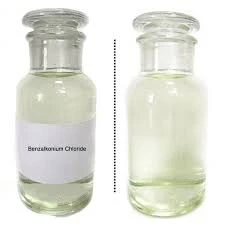hedp phosphonate
HEDP Phosphonate Applications and Benefits in Various Industries
HEDP, or hydroxyethylidene diphosphonic acid, is a member of the phosphonate family, a group of compounds known for their ability to form strong complexes with metal ions. HEDP is widely recognized for its applications in water treatment, industrial processes, and various other fields due to its unique properties and effectiveness in scale inhibition and corrosion control.
Structure and Properties
HEDP possesses a unique chemical structure characterized by two phosphonic acid groups that provide it with a significant affinity for positive metal ions, such as calcium, magnesium, and iron. This property makes HEDP particularly useful in scenarios where metal ion precipitation can lead to scaling and other operational inefficiencies. The compound is typically represented as C2H8O7P2 and is usually found in solution form. Its stability and solubility in water are key factors that contribute to its versatility and effectiveness in numerous applications.
Applications in Water Treatment
One of the primary applications of HEDP is in water treatment processes. It is extensively used as a scale inhibitor in cooling water systems, boilers, and geothermal plants. HEDP effectively prevents the formation of scale deposits, thereby extending the lifespan of equipment and reducing maintenance costs. In cooling towers, for instance, the presence of HEDP helps keep heat exchangers free from scale, enhancing heat transfer efficiency and ensuring optimal operation of the system.
Moreover, HEDP demonstrates remarkable effectiveness in both acidic and alkaline environments, which can be advantageous in various water treatment scenarios. It is often used in combination with other chemicals to achieve a synergistic effect, enhancing overall performance in managing hardness and maintaining water quality.
hedp phosphonate

Role in Industrial Processes
In addition to water treatment, HEDP finds applications in several industrial processes, including textile, paper, food, and metal processing industries. In textiles, for instance, it is used as a chelating agent to remove metal impurities, enhancing color brightness and improving dye uptake. In papermaking, HEDP can help control pitch and stickiness problems, ensuring smoother production processes and higher-quality paper products.
The food industry also utilizes HEDP as a food preservative. Its antimicrobial properties help inhibit calcium-based microbial growth in food systems, thus prolonging shelf life and maintaining product quality. HEDP's versatility as a multifunctional agent makes it an asset across diverse sectors.
Environmental Considerations
While HEDP is effective in many industrial applications, its environmental impact warrants consideration. The compound is classified as less harmful to aquatic life compared to other phosphonates, but monitoring its use is essential to prevent potential accumulation in ecosystems. It is vital for industries to utilize HEDP responsibly, integrating it into broader sustainability frameworks to minimize any adverse effects on the environment.
Conclusion
In conclusion, HEDP phosphonate stands out as a powerful and versatile agent in various applications spanning water treatment and numerous industrial processes. Its unique properties, coupled with its effectiveness in controlling scale and corrosion, make it invaluable across many sectors. As industries continue to prioritize efficiency and sustainability, the role of HEDP is likely to expand even further, contributing to more effective processes and environmentally aware practices. Through responsible usage and ongoing research, the benefits of HEDP can continue to be harnessed while addressing the challenges posed by its environmental footprint.
-
Water Treatment with Flocculant Water TreatmentNewsJun.12,2025
-
Polymaleic AnhydrideNewsJun.12,2025
-
Polyaspartic AcidNewsJun.12,2025
-
Enhance Industrial Processes with IsothiazolinonesNewsJun.12,2025
-
Enhance Industrial Processes with PBTCA SolutionsNewsJun.12,2025
-
Dodecyldimethylbenzylammonium Chloride SolutionsNewsJun.12,2025





